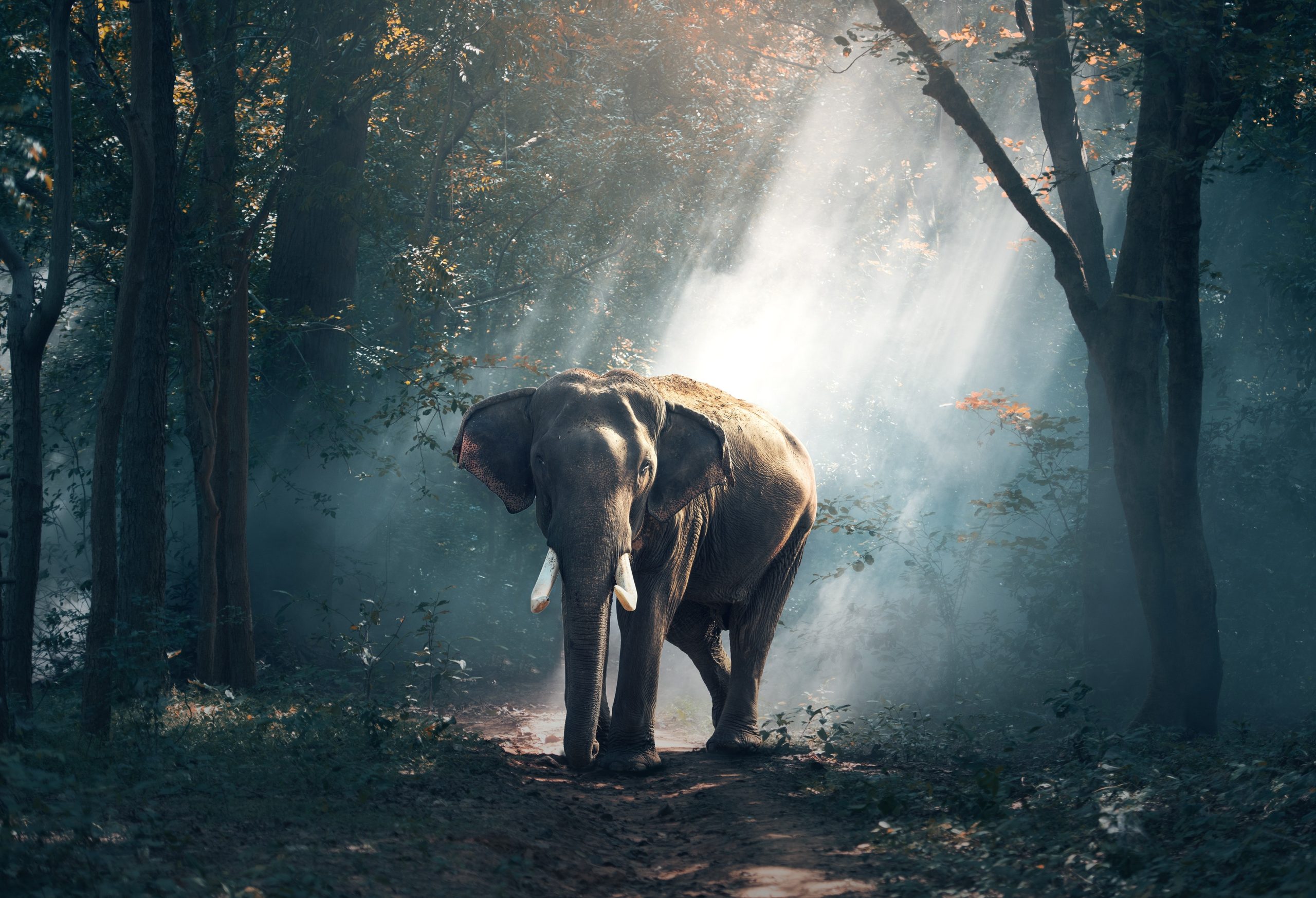In the objective reading, “Shooting an Elephant” by George Orwell maximizes the use of figure of speech,
symbol, and imagery to describe the life of Burmese people under the British Empire. It’s a story about an
incident and most importantly, a metaphor that reflects the war in Burma. He tells the story by employing the use of playful figures of speech which makes it a good subject for New American Criticism.
In Burma, George was one of the British guards. In the first part of the story he tells us how the Burmese
people hate the Europeans, and how he still favors the Burmese people over the British Empire. One day, an elephant was on the loose, so he had to take action. He went to the place where the elephant rampaged. It was a bazaar. After asking the people looking for the elephant, he hears a woman shooing the children. He goes to the woman and sees a corpse of a “coolie” who was stomped by the elephant. So he sent his horse back to prevent it from panicking, and ordered someone to get him an elephant rifle. Someone reports that they have sighted the elephant, so he proceeds to the location. He noticed that the Burmese people were following him and were excited for him to shoot the elephant because they saw the rifle. Upon seeing the elephant, he thinks of the decisions he can make, either kill the elephant or leave it alone. He notices that the elephant is calm by that time and decides not to shoot it. But he felt the pressure of the Burmese people that wanted him to shoot.
Out of this pressure, he decides to shoot the elephant. The elephant took three shots and trumpeted before it went down. He went near the elephant and noticed that it’s still alive. He shot it in the heart a few more times, but it was still alive. Likewise, he changed to his small rifle and shot the elephant again multiple times which still didn’t work. He can’t stand it anymore, so he went away. Later he learns that it took half an hour for it to die. The Burman took the elephant meet and by afternoon, only bones were left of it. After the incident, the owner was furious but what he did was legally right. His fellow Europeans were divided on their opinion on whether what he did was right. Legally, he is right because the elephant killed someone. But in reality he knows that he did it to not look like a fool in front of the Burman.
George Orwell described the Burmese people using alliteration such as “yellow faces of young men that
met me everywhere” (1), the yellow face pertains to the race of Burmese where they live in an Asian country: Myanmar. This does not literally represent the yellow face of people, for it was used to rhyme the yellow – young (y) and met – me (m), the repetition of consonants. Likewise, he described how the prisoners look under the British Empire, “cowed faces of the long-term convicts” (1), the repetition of consonants ‘c’ (cowed – convicts).
He also uses the anaphora in describing where the people are while making the police officer as a stupid person, “Some people said that the elephant had gone in one direction, some said that he had gone in another, some professed not even to have heard of any elephant” (1). The word some at the beginning of the clause is repeated which makes an anaphora. The different opinion has made him fool and this reminds him that Burmese people didn’t trust him as an officer. The creative usage of figures of speech helped Orwell in telling a more engaging story.
At the beginning of the text, the tortured body can be seen through the descriptive words of the narrator.
Readers can see an image of people who have a “cowed faces of long- term convicts” (1), scarred buttocks of the men in prison. The image of this beaten flesh of the prisoner represents how they were treated by the British Empire, it also mentioned that even the police officer felt guilty because he does not want to see this kind of torture made by his fellow British guards. Furthermore, it conveys a message that the officer was forced to do this kind of treatment to Burmese. The rampaging elephant is also used in this story, and it has a connection to the Burmese people. It symbolizes the Burmese people who wanted to be free and rebels over the British colonizers, but it remains to run amok, and it is impossible to tame it in a gentle way so the British officers were forced to shoot the elephant. It demonstrates how the colonizers will treat the Burmese people if they do not obey them, otherwise, they will force them to shoot them as they did to the elephant. The usage of this symbolism is what makes the short story important by not only giving the reader an entertaining read, but also giving the story a hidden meaning.
He also uses the imagery of how the life of Burmese people when the police officer says, “A labyrinth of
squalid bamboo huts, thatched with palm-leaf, winding all over a steep hillside” (1). The description of how the Burmese people live is important because it has a connection to the text so the readers can visualize the image of them. This text also reveals the dirty work of the British Empire towards Burmese people, “The stinking cages of the lock-ups, the gray, cowed faces of the long-term convicts, the scarred buttocks of the men who had been flogged with bamboos—all these oppressed me with an intolerable sense of guilt” (1), the narrator works as a police officer, and he is also British, but he can see and describe how they treat the prisoners.
The author simply uses the figure of speech to reveal the dirty works of the British Empire towards the
Burmese people and even if they treat them like that, there is a person who feels guilty and was forced to do it. He did not want to do it but for the sake of his work, he’ll do that. Orwell uses the first-person point of view so the readers can actually see also the people with a good heart even regardless of their race.
References:
- Lynch, M. (2017, February 17). Shooting an Elephant Imagery. GradeSaver. Retrieved December 03, 2020, from https://www.gradesaver.com/shooting-an-elephant/study-guide/imagery
- Lynch, M. (2017, February 17). “Shooting an Elephant Metaphors and Similes |. GradeSaver. Retrieved December 3, 2020, from https://www.gradesaver.com/shooting-an-elephant/study-guide/metaphorsand-similes
- Lynch, M. (2017, February 17). Shooting an Elephant Symbols, Allegory and Motifs. GradeSaver. Retrieved December 03, 2020, from https://www.gradesaver.com/shooting-an-elephant/studyguide/symbols-allegory-motifs
- Rapson. (n.d.). “Shooting an Elephant” Figures of Speech. Mr. Rapson’s Blog. Retrieved December 3, 2020, from https://jrapson.wordpress.com/ap-english-language-and-composition/shooting-an-elephantunit/shooting-an-elephant-figures-of-speech/



